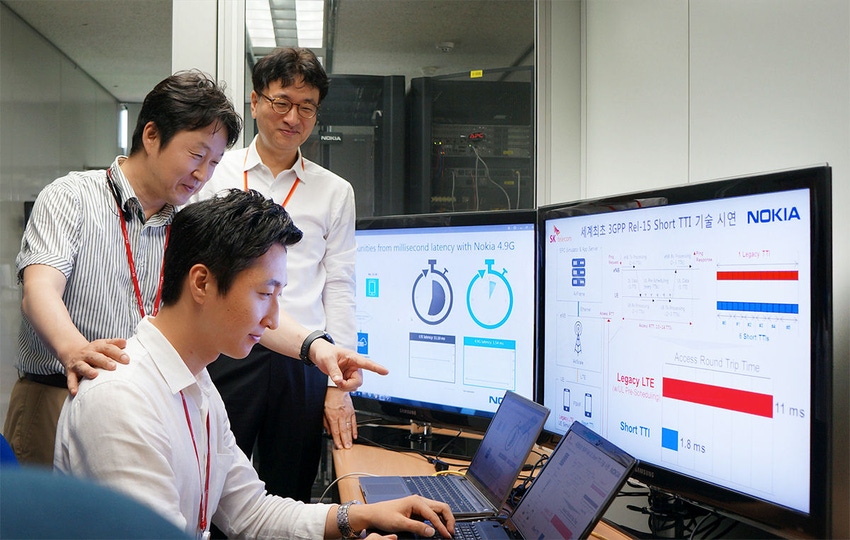SK Telekom and Nokia have claimed to have reduced latency between the handset and base station to 2 milliseconds (ms) over its LTE network.
September 4, 2017

SK Telekom and Nokia have claimed to have reduced latency between the handset and base station to 2 milliseconds (ms) over its LTE network.
After a successful demonstration, the pair has declared a round-trip latency of 2ms was achieved, though specifics on how far the signal had to travel have been left out. While the general public might not be wowed by the progress made, it is another incremental step towards 5G, which the International Telecommunication Union has previously stated needs to be under ultra-low latency of 1ms.
“Low latency technology is essential in realizing 5G services such as autonomous driving, artificial intelligence and virtual reality services,” said Park Jin-hyo, Head of Network Technology R&D Center of SK Telecom.
“We will continue to improve our low latency technologies to achieve 5G evolution, while applying the latest technologies to our LTE networks to further enhance customer experience.”
Latency between handsets and a base station in the existing LTE environment is around 25ms, so it is certainly a step forward, but it is not low enough to seamlessly provide services that require real-time transmission of data such as autonomous driving and telemedicine. And while such small gains might not make sense to some people, SK has helped out with a good example of why ultra-low latency is so important.
With a latency of 25ms, upon sending a stop signal to a self-driving vehicle running at 150 kilometres per hour, the vehicle travels about one meter further before it actually begins to decelerate. However, with the 2ms latency technology, the vehicle moves only 8 centimetres before it begins to slow down. Using this example, you can see the importance, and also the benefit to safety over human performance.
Right now, latency of 2ms can support remote learning or enterprise mobility, but the glamourous stuff such as autonomous driving, or AR and VR services, will have to wait for the moment.
About the Author(s)
You May Also Like








.png?width=300&auto=webp&quality=80&disable=upscale)


_1.jpg?width=300&auto=webp&quality=80&disable=upscale)


.png?width=800&auto=webp&quality=80&disable=upscale)